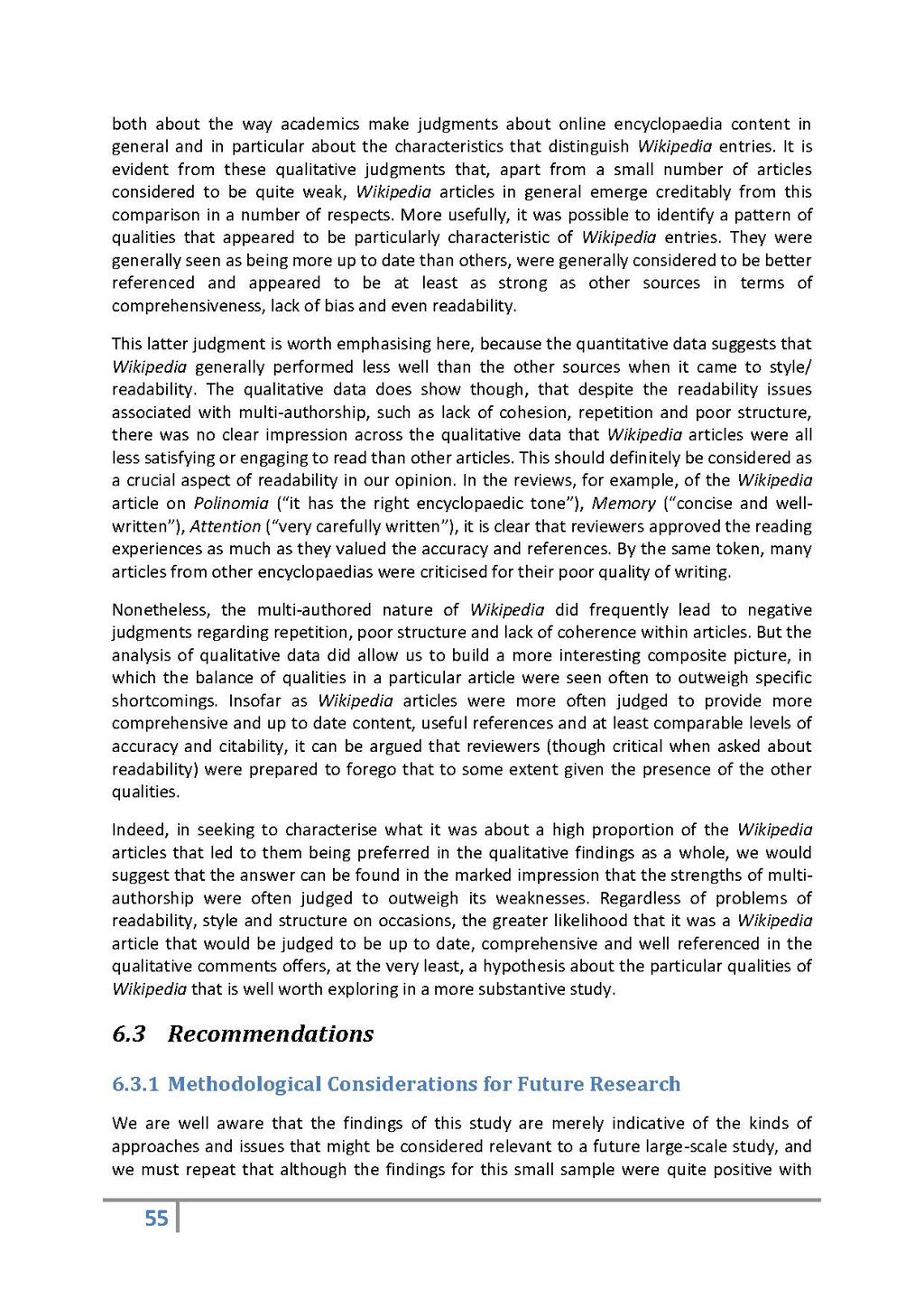both about the way academics make judgments about online encyclopaedia content in general and in particular about the characteristics that distinguish Wikipedia entries. It is evident from these qualitative judgments that, apart from a small number of articles considered to be quite weak, Wikipedia articles in general emerge creditably from this comparison in a number of respects. More usefully, it was possible to identify a pattern of qualities that appeared to be particularly characteristic of Wikipedia entries. They were generally seen as being more up to date than others, were generally considered to be better referenced and appeared to be at least as strong as other sources in terms of comprehensiveness, lack of bias and even readability.
This latter judgment is worth emphasising here, because the quantitative data suggests that Wikipedia generally performed less well than the other sources when it came to style/ readability. The qualitative data does show though, that despite the readability issues associated with multi-authorship, such as lack of cohesion, repetition and poor structure, there was no clear impression across the qualitative data that Wikipedia articles were all less satisfying or engaging to read than other articles. This should definitely be considered as a crucial aspect of readability in our opinion. In the reviews, for example, of the Wikipedia article on Polinomia ("it has the right encyclopaedic tone"), Memory ("concise and well-written"), Attention ("very carefully written"), it is clear that reviewers approved the reading experiences as much as they valued the accuracy and references. By the same token, many articles from other encyclopaedias were criticised for their poor quality of writing.
Nonetheless, the multi-authored nature of Wikipedia did frequently lead to negative judgments regarding repetition, poor structure and lack of coherence within articles. But the analysis of qualitative data did allow us to build a more interesting composite picture, in which the balance of qualities in a particular article were seen often to outweigh specific shortcomings. Insofar as Wikipedia articles were more often judged to provide more comprehensive and up to date content, useful references and at least comparable levels of accuracy and citability, it can be argued that reviewers (though critical when asked about readability) were prepared to forego that to some extent given the presence of the other qualities.
Indeed, in seeking to characterise what it was about a high proportion of the Wikipedia articles that led to them being preferred in the qualitative findings as a whole, we would suggest that the answer can be found in the marked impression that the strengths of multiauthorship were often judged to outweigh its weaknesses. Regardless of problems of readability, style and structure on occasions, the greater likelihood that it was a Wikipedia article that would be judged to be up to date, comprehensive and well referenced in the qualitative comments offers, at the very least, a hypothesis about the particular qualities of Wikipedia that is well worth exploring in a more substantive study.
6.3 Recommendations
6.3.1 Methodological Considerations for Future Research
We are well aware that the findings of this study are merely indicative of the kinds of approaches and issues that might be considered relevant to a future large-scale study, and we must repeat that although the findings for this small sample were quite positive with
55
